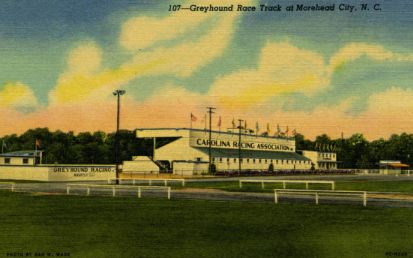
Dog racing and the pari-mutuel betting that came along with it had a short life in North Carolina, extending only from the late 1940s to the mid-1950s. In the period of rapid growth after World War II, promoters of tourism in coastal counties saw dog racing as a means of attracting more visitors to resort communities while providing a new source of money to supplement the property tax. Following passage of the necessary legislation by the General Assembly, two dog tracks were built, one in Carteret County at Morehead City and the other in Currituck County just south of the border between Virginia and North Carolina.
Opposition to dog racing, fragmented at first, became increasingly organized once the tracks were actually in operation. After little more than a trial run, the General Assembly repealed the law authorizing pari-mutuel betting, dog racing was discontinued, and the two tracks were closed.